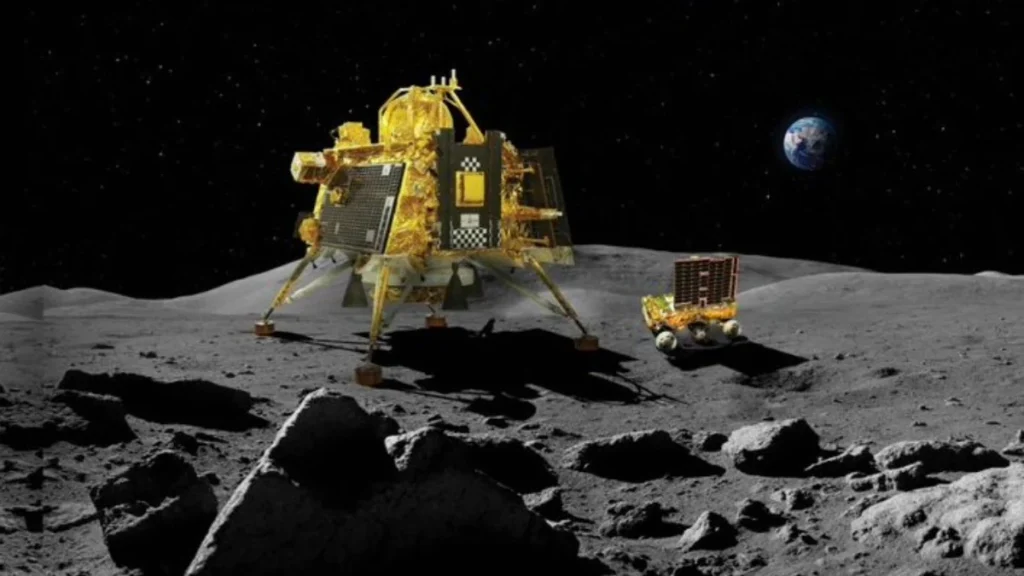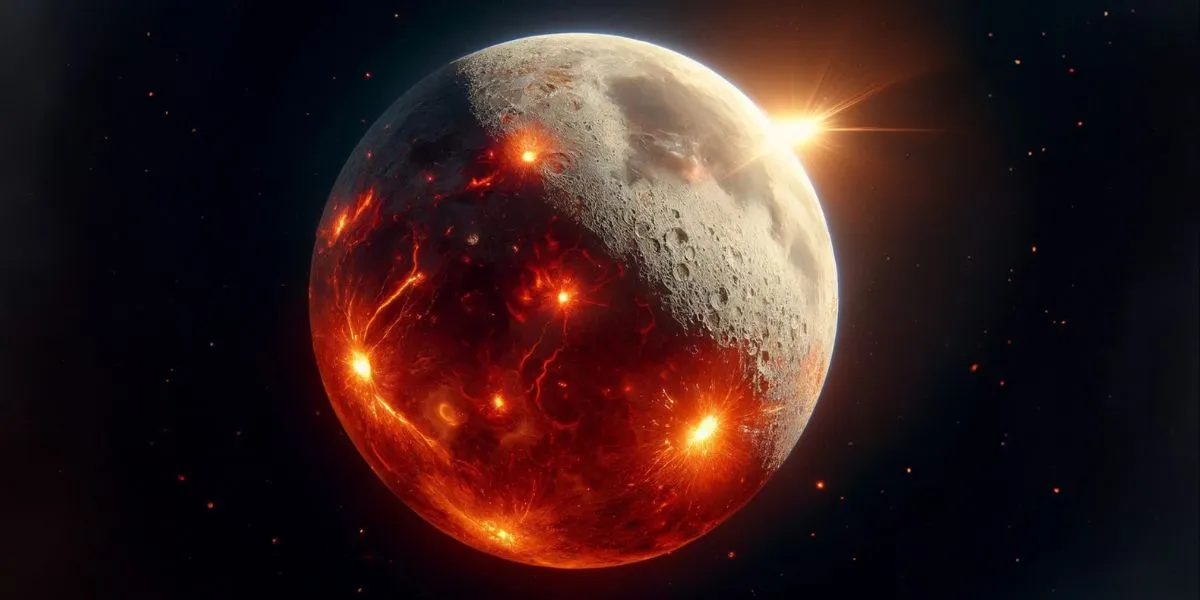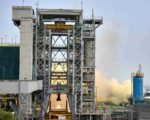During its nine-day journey, Pragyan explored 103 meters and analyzed 23 unique sites on the lunar surface.
Chandrayaan-3 Rover Finds Clues of Ancient Lunar Magma Ocean
India’s Chandrayaan-3 mission, which successfully landed near the Moon’s South Pole in 2023, may have made a significant discovery: evidence of a former magma ocean beneath the lunar surface. According to a recent study, data from the mission’s Pragyan rover suggests that the Moon’s South Pole region may have once been covered by a vast ocean of molten rock. This revelation could offer new insights into the Moon’s early geological history and its formation process. During its nine-day mission, Pragyan traversed 103 meters across the lunar landscape, examining 23 different locations to collect data.
Advanced Instrumentation and Analysis
To achieve this discovery, Pragyan was equipped with an alpha particle X-ray spectrometer, which allowed it to analyze the composition of the Moon’s regolith—the outer layer of lunar soil. The spectrometer provided detailed chemical readings of the elements present in the samples, which were later analyzed by a team led by Santosh Vadawale at the Physical Research Laboratory in Ahmedabad, India. Their analysis revealed the presence of specific minerals that support the theory of a once-molten ocean beneath the lunar surface.
Support for the Lunar Magma Ocean Hypothesis
The findings from Pragyan align with the lunar magma ocean hypothesis, which suggests that the Moon’s outer crust formed as lighter materials floated to the surface while denser materials sank toward the core. According to a study published in the Nature journal, the regolith around the Chandrayaan-3 landing site exhibited a uniform composition, primarily made up of ferroan anorthosite rock. This type of rock is believed to have formed from the solidification of molten magma, providing key evidence for the hypothesis of a primordial magma ocean.

Broader Implications of the Discovery
The discovery of a uniform regolith composition near the Moon’s South Pole that resembles soil samples from equatorial and mid-latitude regions has broader implications. It suggests that the processes that formed the Moon’s crust may have been more uniform and widespread than previously thought. This could lead to a reevaluation of our understanding of the Moon’s geological history and the processes that shaped its current landscape.
Future Exploration and Research Prospects
The Chandrayaan-3 mission’s findings open new avenues for future lunar exploration. Scientists are now considering targeted studies to further explore the South Pole region for additional evidence of ancient volcanic and tectonic activities. These efforts could deepen our understanding of how celestial bodies, including Earth, undergo geological transformations over billions of years.
Chandrayaan-3’s Contribution to Lunar Science
Overall, Chandrayaan-3’s mission has not only advanced our knowledge of the Moon’s South Pole but also contributed valuable data that could help unravel the complexities of lunar evolution. The mission’s discoveries underscore the importance of international collaboration and investment in space exploration, as these efforts continue to yield groundbreaking insights into the cosmos.


















